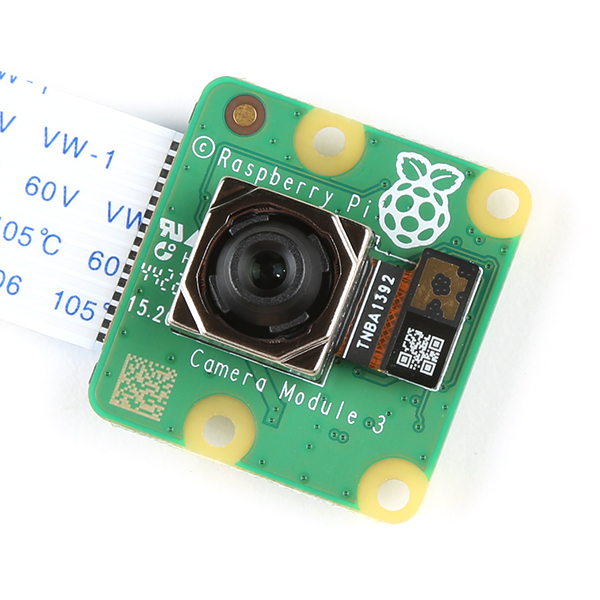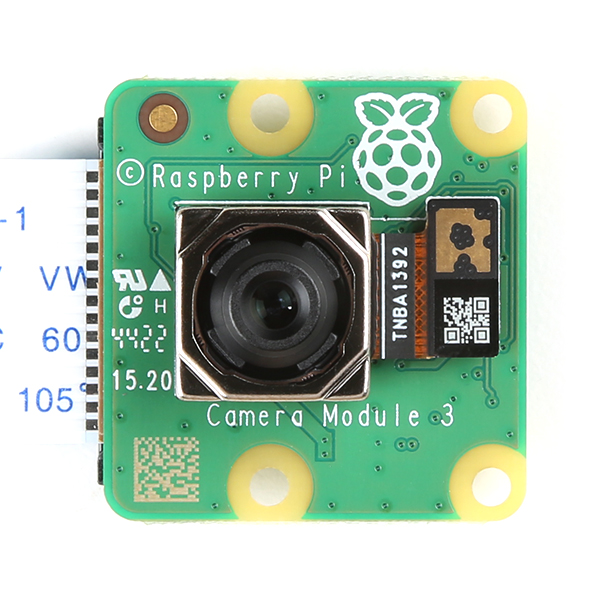The Raspberry Pi Camera Module 3 is the latest entry in the mainstream RPi camera line-up, and the successor to the popular Camera Module 2. Built around a 12-megapixel Sony IMX708 image sensor module, Camera Module 3 offers a few key enhancements over its predecessor. Improved low-light sensitivity makes for better photos and output in situations where there's not a lot of light. The module also features powered autofocus making it easier to get a sharp picture output. Finally the Camera Module 3 features High Dynamic Range (HDR) support expanding the range of color and contrast in the output.
This version features the standard lens (76° field of view). It also comes in a wide-angle lens variation which is available in the related products below.
This comes with the cable compatible with the Raspberry Pi 5 and forward models. Please check the related products if you need the old style cable.
- Back-illuminated and stacked CMOS 12-megapixel image sensor (Sony IMX708)
- High signal-to-noise ratio (SNR)
- Built-in 2D Dynamic Defect Pixel Correction (DPC)
- Phase Detection Autofocus (PDAF) for rapid autofocus
- QBC Re-mosaic function
- HDR mode (up to 3 megapixel output)
- CSI-2 serial data output
- 2-wire serial communication (supports I2C fast mode and fast-mode plus)
- 2-wire serial control of focus mechanism
Raspberry Pi Camera Module 3 Product Help and Resources
Core Skill: Electrical Prototyping
If it requires power, you need to know how much, what all the pins do, and how to hook it up. You may need to reference datasheets, schematics, and know the ins and outs of electronics.
Skill Level: Rookie - You may be required to know a bit more about the component, such as orientation, or how to hook it up, in addition to power requirements. You will need to understand polarized components.
See all skill levels
Comments
Looking for answers to technical questions?
We welcome your comments and suggestions below. However, if you are looking for solutions to technical questions please see our Technical Assistance page.
Customer Reviews
4 out of 5
Based on 2 ratings:
0 of 1 found this helpful:
Not working yet
I followed the instructions on compiling the code to run the camera. But because of some presently unknown dependency, the code will not compile on my Raspberries (I have tried 2 so far).
As a result, my camera doesn't work yet. Hopefully, I'll be able to get things working later.
I don't know why SparkFun cannot offer a complete install package that doesn't require compiling.
Try ensuring i2c is enabled on the Pi's
Works good




